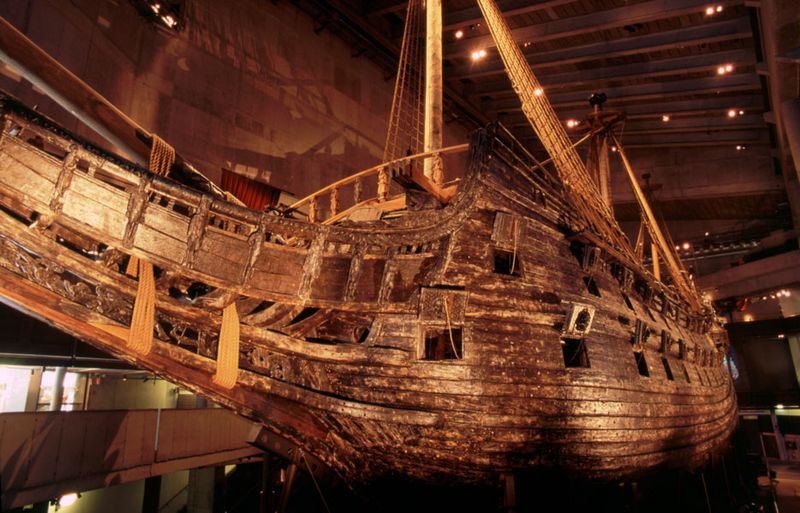Vasa Ship
Vasa Ship had the misfortune of capsizing and then sinking in 1628 after sailing only 1300 meters into the ocean; a second gust of wind struck its huge white sails and overturned the ship on its side. Water flooding in through the gun portals helped sink the ship in the shallow waters belonging to Stockholm harbor.
At the time, Vasa was the most technologically advanced warship before it set sail on its first voyage. How could Sweden's pride in its Navy possibly sink? Let's discover the root causes of this unforeseen event.
Loss and Competition
The Swedish Navy already underwent a whopping loss of 10 vessels during a terrible storm on September 20, 1625. Shortly, two small ships were ordered by King Gustav ll Adolf to be built, quickly.
He then gave the order for Vasa's construction to begin in early 1626, but only as a small ship, and being completed 2.5 years later as a large ship, having undergone many modifications in requirements, because the king kept changing his mind about certain aspects of the ship's features like gun decks.
He was in a huge hurry to see Vasa built lightning fast, as though competing with Denmark's latest ship-building projects; he learned that a big vessel sporting 2 gun decks was being built in Denmark. Naturally, the king could not be outshone and had to take serious measures.
Overarmed and Lavish Ornamentation
The number and sorts of armaments for Vasa to carry was revised repeatedly. The king often gets accused of seemingly meddling in the ship's original design. Initially, Vasa's 111-foot version was to carry only 32, 24-pound guns. But this number increased and kept increasing until it arrived finally at record-breaking 64 brass cannons.
Vasa was beautifully decorated, covered in wooden carvings. There is a universally agreed belief that the overemphasis on the vessel's firepower and lavish decoration and overlooking its seaworthiness and stability largely contributed to the ship's ultimate fate.
95% of Vasa's Wood Survived
Approximately an unusual 95% of Vasa's wood is still intact by the time Sweden eventually raised it back in 1961. Despite the ship failing to work out brilliantly for King Gustav ll Adolf, it became a windfall for archaeologists.
Tourist Information
Today, Vasa's remains can be seen in Vasa Museum, located in Stockholm. The museum claims it's the sole surviving preserved 17-century vessel in the world.
Most Famous Must-See Tourist Attractions in Sweden
